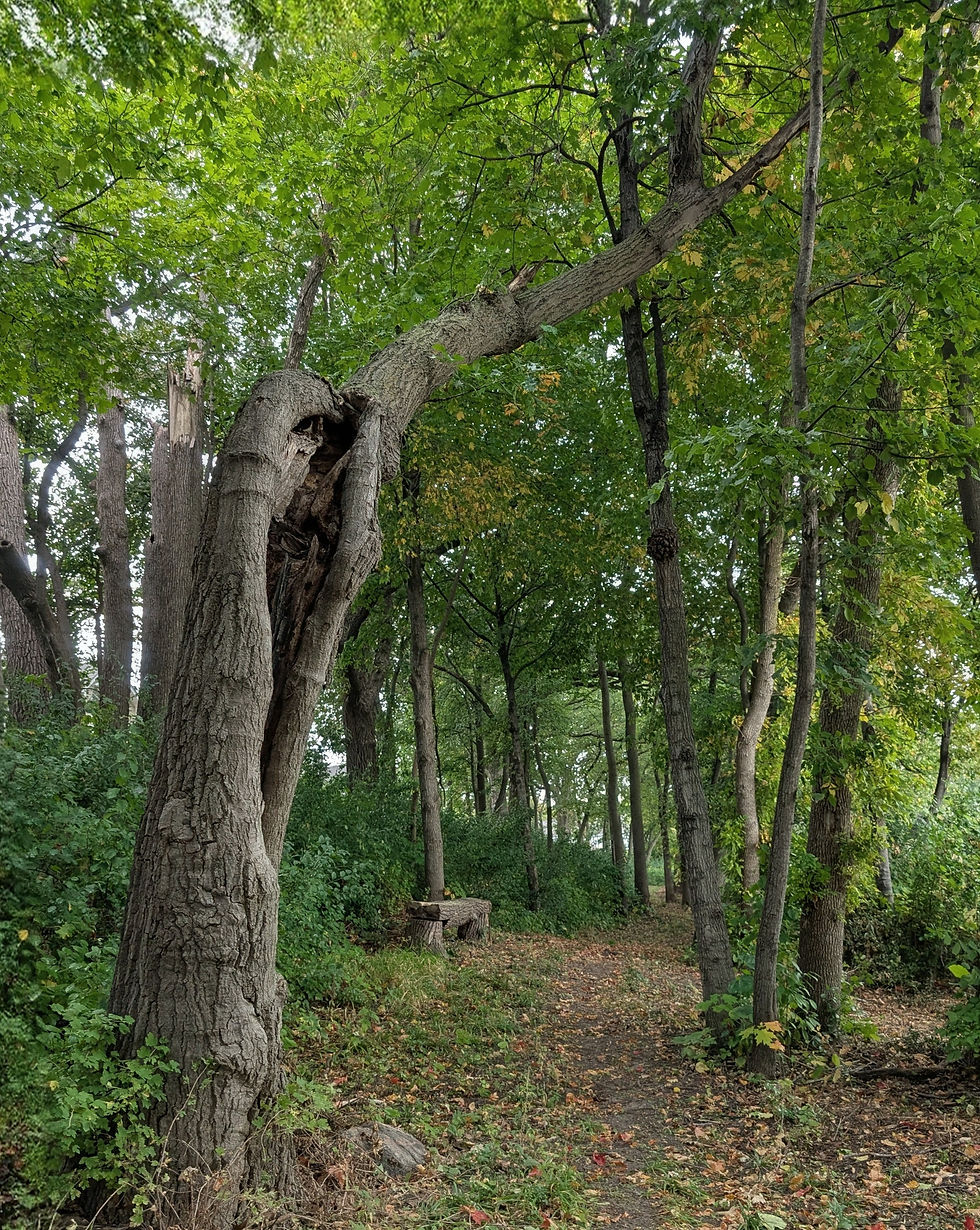Wildlife Tree
- D. S. Brumitt
- Mar 28, 2020
- 1 min read
Updated: Apr 5, 2020
Offering sustenance through all stages of life.

About 2 miles along the trail I stop by an expansive wetland to see who has returned from winter habitations. Canadian geese, ducks, little black cormorants, egrets, blue herons and even trumpeter swans share this neighborhood and I happily await my first sighting of each. But today I am struck by the sight of this aged, apparently lifeless, oak tree.
Where the bark is missing I can admire the gorgeous twist of blonde, taupe and brown inner wood and the gnarled bumps and knobs left by branches long gone. I wonder what’s been living underneath the bark all winter — insects, fungus, bacteria? Remnants of an invasive vine dangle from the upper branches.
“Snag” is the traditional forestry word for a standing dead, or partially dead, tree. Recently biologists have adopted a more descriptive and deserving term: "Wildlife Tree."
Mother Earth News
In North America, 85 species of birds, 50 mammal species, and roughly a dozen reptiles and amphibians rely on snags for shelter, food, mating, resting, nesting and other critical functions. Dozens of invertebrates — millipedes, beetles, spiders, worms, ants and more — also call snags home. No tree, in fact, ever is lifeless — not even when the tree is long dead.



Comments